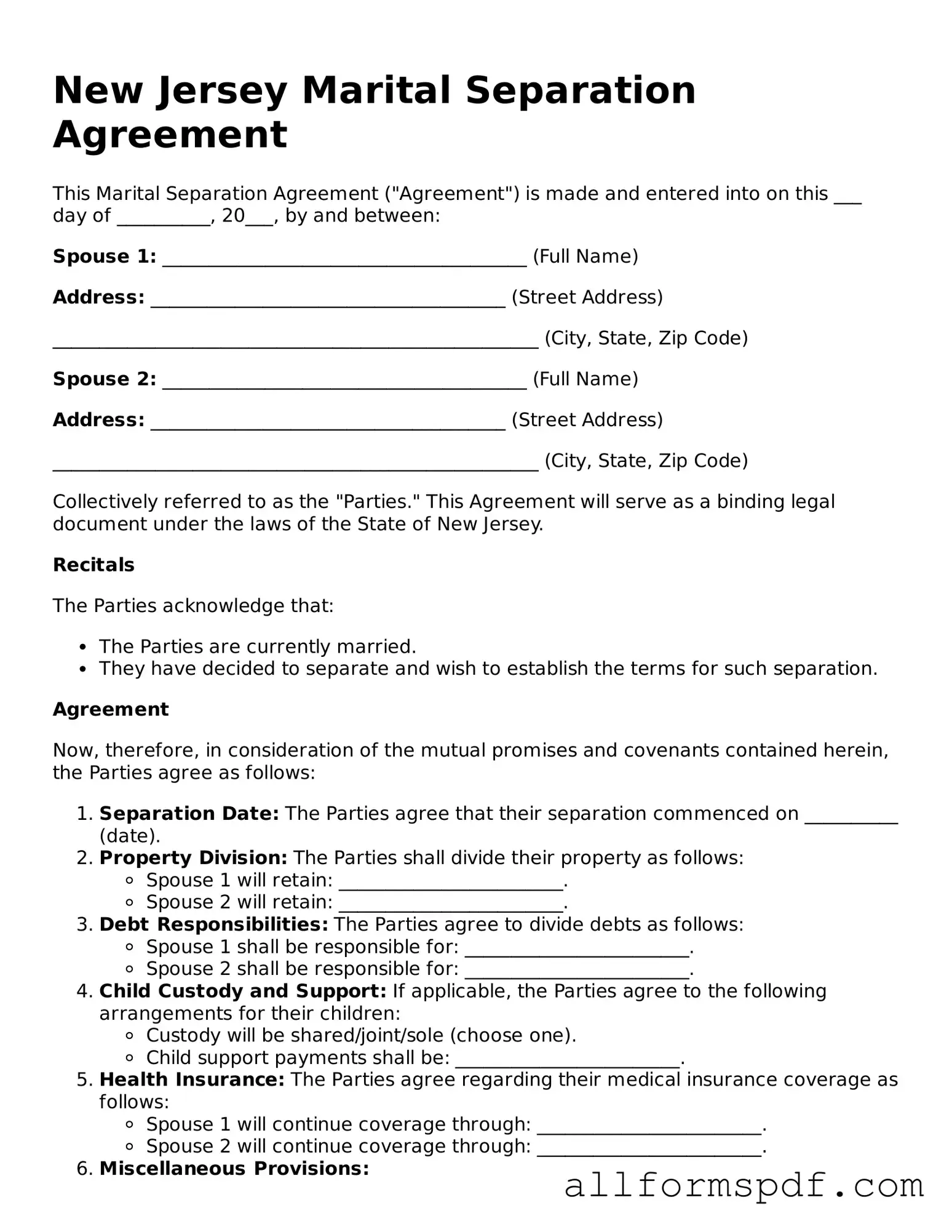Filling out a Marital Separation Agreement form can be a daunting task, and many individuals make common mistakes that can lead to complications down the line. One frequent error is failing to provide accurate personal information. It's essential to double-check names, addresses, and contact details. Any inaccuracies can cause delays in processing the agreement and may even result in legal complications.
Another common mistake is neglecting to clearly outline the terms of the separation. Vague language can lead to misunderstandings and disputes later. Individuals should strive to be as specific as possible regarding asset division, child custody arrangements, and support obligations. Clarity is key in avoiding future conflicts.
Many people also overlook the importance of including all relevant assets and liabilities. It is crucial to list not only shared property but also debts. Omitting significant assets or liabilities can create inequities that may need to be addressed later, potentially leading to resentment and legal battles.
Additionally, some individuals fail to consider the tax implications of their agreements. Different types of assets can have varying tax consequences. Understanding these implications can help both parties make informed decisions that will benefit them in the long run. Consulting a financial advisor or accountant can provide valuable insights.
Another mistake is not taking the time to review the agreement thoroughly before signing. Rushing through the process can lead to overlooking critical details. It’s advisable to read through the entire document multiple times and, if possible, seek legal advice to ensure that all aspects are understood and agreed upon.
In some cases, individuals may forget to include a plan for future modifications. Life circumstances can change, and having a clause that allows for adjustments to the agreement can save time and stress in the future. This foresight can be invaluable as situations evolve.
Moreover, many people assume that a verbal agreement is sufficient. However, a Marital Separation Agreement must be in writing and signed by both parties to be legally binding. Relying solely on verbal discussions can lead to misunderstandings and disputes that could have been easily avoided.
Finally, failing to have the agreement notarized can be a significant oversight. Notarization adds an extra layer of authenticity and can help prevent disputes regarding the validity of the agreement. Taking this step can provide peace of mind and ensure that the document holds up in court if necessary.
